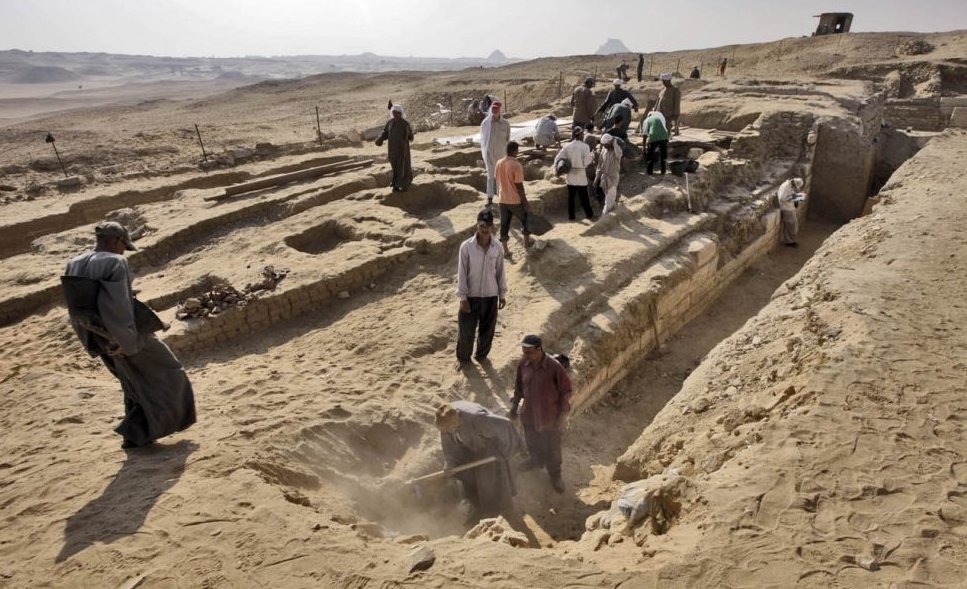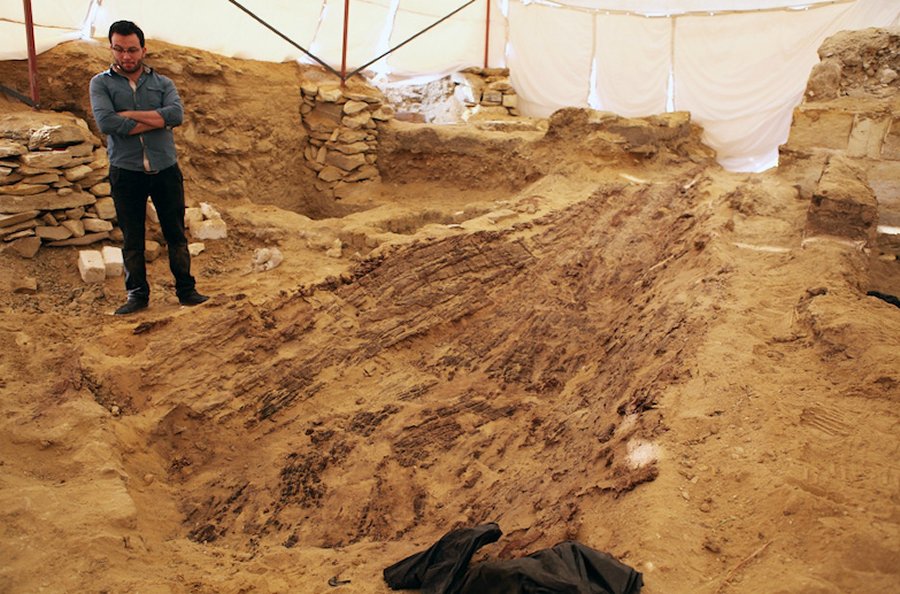MessageToEagle.com – An 18 m (60-foot)-long wooden boat has been discovered at Abusir South that once again highlights the importance of this cemetery of the Old Kingdom officials.
The boat’s orientation, length, and the pottery collected from its interior, make a clear connection between the structure and the vessel, both dating to the very end of the Third or beginning of the Fourth Dynasty, about 2550 BC.

While extremely fragile, the roughly 4,500 year old planks will shed new light on ship building in ancient Egypt. The wooden planks were joined by wooden pegs that are still visible in their original position.
The desert sand has preserved the plant fiber battens which covered the planking seams. Some of the ropes that bound the boat together are also still in their original position with all their details intact, which is a unique discovery in the study of ancient Egyptian boats.

Archaeological excavations of a large mastaba termed AS 54 began in 2009 and continued until now. Its exceptional size (52.60 x 23.80 m), orientation, architectural details, as well as the name of king Huni (Third Dynasty,) discovered on one of the stone bowls buried in the northern underground chamber, indicate the high social standing of the person buried in the main shaft.
This shaft, however, has not yet been located and the name of king Huni remains unknown due to the bad state of preservation of the cruciform chapel.
The construction details are not the only features that make the boat unique. The habit of burying boats beside mastabas began in the Early Dynastic Period. This phenomenon has been well documented for royal structures, as well as for some tombs belonging to members of the royal family, the elite of society.
“In fact, this is a highly unusual discovery since boats of such a size and construction were, during this period, reserved solely for top members of the society, who usually belonged to the royal family. This suggests the potential for additional discoveries during the next spring season,” Miroslav Bárta, director of the excavations, said in a press release.
Scholars debate the purpose of Egyptian boat burials.
Did they serve the deceased in the afterlife, or might they have functioned as symbolical solar barques, used during the journey of the owner through the underworld.
The Old Kingdom kings adopted the earlier tradition, and often had several boats buried within their pyramid complexes.
Unfortunately, most of the pits have been found already empty of any timber, others contained little more than brown dust in the shape of the original boat.
The only exception were the two boats of Khufu that have survived, and were reconstructed or are in the process of reconstruction. However, there was no boat of such dimensions from the Old Kingdom found in a non-royal context, until the new discovery at Abusir.
“It is by all means a remarkable discovery. The careful excavation and recording of the Abusir boat will make a considerable contribution to our understanding of ancient Egyptian watercraft and their place in funerary cult, “said Bárta.
MessageToEagle.com






